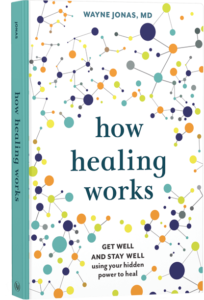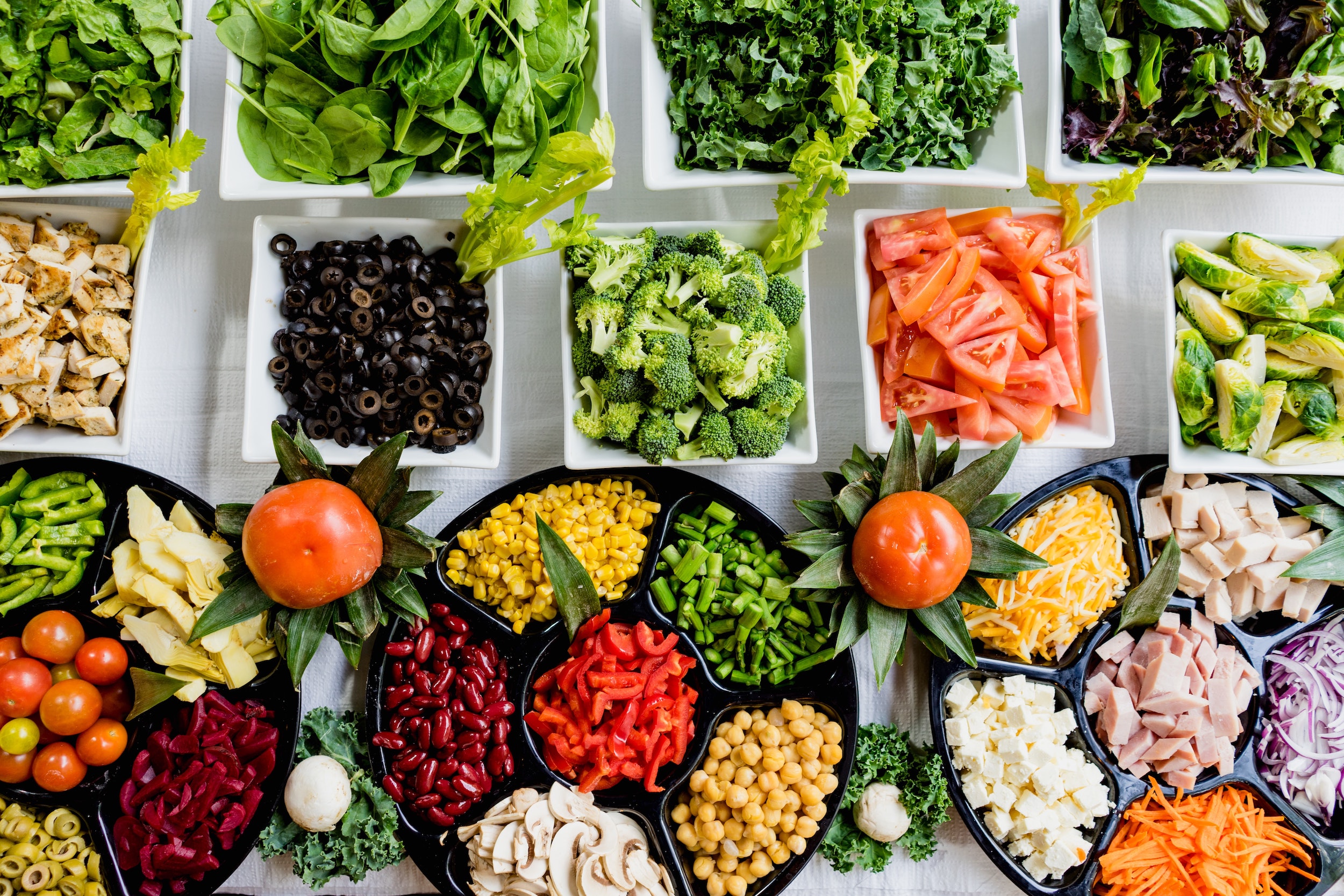Chronic pain is the medical term for pain that lasts more than about three months. The word “chronic” means “long-lasting.” Researchers estimate that more than 100 million American adults have chronic pain, so you are not alone. Chronic pain is one of the leading reasons we visit the doctor and take medication. It is extremely common.
As we’ve discussed, pain is not just in your body. It can affect your relationships, your work, your sleep, and your mental and emotional health. Pain, especially chronic pain, affects your ability to enjoy life and focus on what you are doing.
Back pain is one example of a physical problem that affects other areas of your life. Researchers know that if you have lower back pain, you are four times more likely to feel mental and emotional distress than if you were pain-free. You would also be three times more likely to be limited in what you can do each day.
Nutrition, Food, and Pain
The good news is, you can help manage your chronic pain by making some changes to your daily life. Here, you will learn how something as simple as what you eat can make a significant difference in dealing with your chronic pain.
Research shows two things are closely related to both chronic pain and nutrition. These are a condition called obesity, which means being overweight, and the type of foods you eat. Some foods cause inflammation in the body, which can lead to long-lasting, or chronic, pain. Other foods fight inflammation, which helps to reduce pain.
Why Do Obesity and Pain Go Together?
If you have obesity, you probably know it and are not happy to read about it in a blog about pain. You might feel blamed for having obesity like you caused your pain. In fact, it is not you but the extra tissue on your body that is part of your pain. This post is partly about obesity because it is such a common condition, like chronic pain.
Researchers now know that obesity and chronic pain often go together. Studies show people who have obesity are more likely to have pain that keeps coming back. They also show that people with more severe obesity tend to have worse pain. Pain and obesity go together in every age group along with lifespan, from children to older adults. Having a higher body mass index, or BMI, is also shown to lead to low back pain.
Another way is inflammation. Your body’s cells can become inflamed, or irritated, by many things. Normally, your body calms the inflammation by releasing specific substances. If you have obesity, your body has many fat cells. These cells are active, releasing substances that cause a constant, low level of inflammation in your body. This contributes to chronic pain and many other diseases.
Eating to Reduce Chronic Pain
What you eat can lower the inflammatory substances in your body or raise them. It can also help determine how much fat your body carries. So, what you eat and drink can reduce both the fat and fat cells and the inflammation from them. This means it can reduce the amount of pain you have. As a side benefit, eating foods that stop inflammation can also reduce obesity, so your body becomes healthier over time.
Research shows that foods and drinks that reduce inflammation can reduce chronic pain and improve your mood. Avoiding foods and drink that cause inflammation can also help. In fact, changing your diet and lifestyle can allow you to work with your health care team to reduce the amount of medication you take or even stop taking it. Even small changes, such as switching to whole grains and eating more fish and less red meat, can make a difference in your health.
Here are some foods that reduce inflammation that you should consider trying:
Whole Grains:
- Whole grain bread, oats, brown rice, barley, bulgur, quinoa, couscous, polenta, and rye bread. You can also switch to whole wheat tortillas and pasta.
- You can use potatoes, sweet potatoes, and plantains in recipes the same way as whole grains. Avoid having these fried very often because fried foods can cause inflammation.
Beans, nuts, seeds, and plant foods that have a pod, such as peas:
- Black beans, kidney beans, garbanzos (also called chickpeas), white beans (also called navy beans or cannellini beans), hummus, nuts, and seeds. Nuts can include walnuts, almonds, pecans, and peanuts. Seeds include sunflower seeds, pumpkin seeds, pine nuts, and more.
- Peas and soybeans are a type of plant called a “legume” that comes in a pod. You can eat sugar snap peas, regular peas, roasted soy nuts, edamame, and any type of tofu.
Fruits:
- Berries, pomegranates, and cherries. Dark-colored fruits are especially good for preventing inflammation.
- Any other type of fruit. Avoid drinking fruit juice or drink a small glass and mix it with an equal amount of water. (Fruit juice contains a lot of sugar, which makes inflammation worse.)
Fish:
- Choose fish that lived in cold water, including salmon, herring, anchovies, sardines, and mackerel. Wild salmon is healthy to eat, but farmed salmon is not because it usually has a lot of antibiotics in it. Look for recipes using fresh sardines, herring, and mackerel, or buy them canned from the supermarket.
Eggs, cheese, and yogurt:
- Low-fat or skim milk, yogurt, natural cheese (not processed cheese such as cheese slices or spreads). Some people do not digest cow’s milk. You can buy milk that does not include lactose (milk sugar) or avoid milk. Check labels on yogurt to avoid brands with a lot of added sugar.
In addition to some of the foods to avoid listed above, here are some you should eat less of or, if possible, avoid altogether:
- Red meat, such as beef—If you do eat beef, have it only on special occasions. Grass-Fed beef is the best, but it costs more than regular beef, so you might want to plan for it in your grocery budget. Eat less of other beef, including hamburgers, steaks, ribs, and beef in tacos, stir-fry, and sandwiches.
- Processed meat, such as ham, bacon, sausage, and lunch meat.
- Certain oils and fats, including margarine, shortening, lard, and oils from soybean, safflower, corn, and sunflowers.
- White bread.
- Rice and corn cereals and instant oatmeal.
- Instant or white rice, packaged stuffing.
- Foods with high-fructose corn syrup.
- Soda, including diet soda, fruit juice, and other drinks with added sugar, such as energy drinks and coffee or tea drinks with flavorings
Also avoid or eat fewer sweets, especially processed sweets. These include cookies, cakes, pastries such as muffins, donuts, brownies, pies, and other sugary desserts.

Simple Food Tips for Less Pain
The best diet to lower inflammation and pain is based on healthy foods that come from plants. This means getting most of your food from eating whole grains, fruits, vegetables, beans, nuts, and seeds.
Avoid foods that make your blood sugar go up quickly after a meal, including white bread, refined (processed) grains and other processed foods and sugary foods. If your blood sugar does this often, it creates inflammation in your body.
Limit the amount of added sugar in your food each day. Daily limits for adults are:
- Men: 39 grams
- Women: 25 grams
The limits don’t mean you have to eat that much-added sugar. You can eat less! But try to stick to that amount or less each day. You will need to read labels to check for how much sugar is in a serving of food. Most added sugar is already in the food, even foods you would not expect to have sugar. You might also need to measure the food to learn how many servings you have.
Eat plenty of these foods. These can replace other foods you eat now, such as white bread, red meat, and packaged snacks.
- Fruits and vegetables—Most Americans eat just 1 fruit and 1 vegetable each day. Often, that vegetable is French fries—high in calories, salt and fat, and low in nutrition. Doctors and nutrition experts recommend eating 5 to 7 servings of fruits and vegetables every day.
- Herbs and spices—Use these to replace some of the salt you cook with.
- Healthy fats, such as olive oil, flax oil, or canola oil.
- Foods made from soy, such as tofu, roasted soy nuts, edamame, and soy milk, unless your doctor tells you to avoid soy.
- Fish—Two or 3 times a week. Look at the chart in this guide to learn more about the best types of fish.
For a basic anti-inflammatory diet, you can use the U.S. Department of Agriculture’s MyPlate example. For a more detailed anti-inflammatory diet, you can use the Mediterranean Diet Pocket Guide or search for the “Mediterranean diet pyramid” online.
For all references and to learn more about the role of using food and nutrition in treating pain, see the Guide to Nutrition for Chronic Pain guide here. As always, consult your doctor or physician before making any changes in your health routine or diet.

Your Health Into Your Own Hands
Drawing on 40 years of research and patient care, Dr. Wayne Jonas explains how 80 percent of healing occurs organically and how to activate the healing process.

